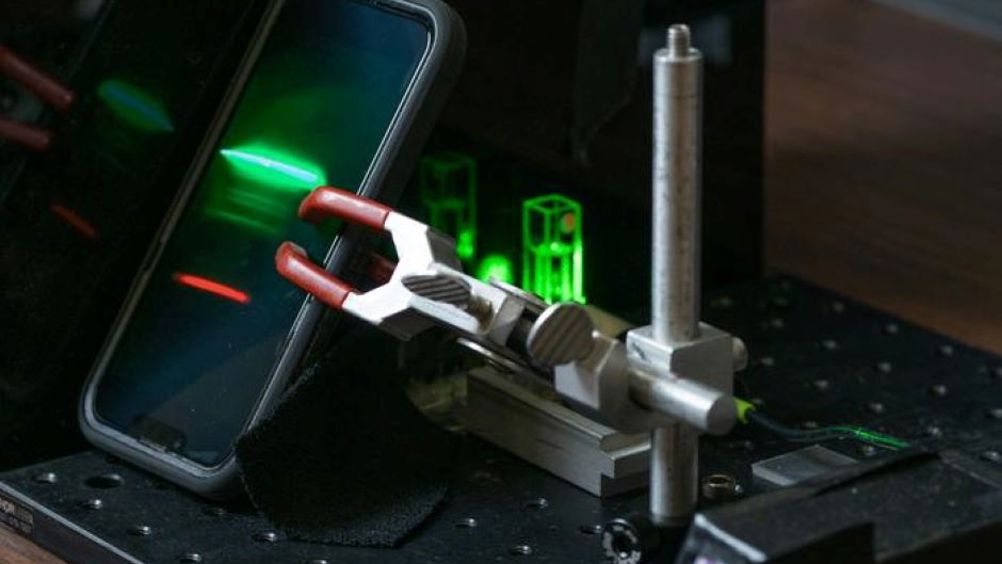Technologies combined into portable spectrometer to rapidly detect harmful materials
A smartphone camera and Raman spectrometer have been combined into a device that identifies drugs, chemicals and biological molecules that are invisible to the human eye.

Dr Peter Rentzepis, a professor in the Department of Electrical and Computer Engineering at Texas A&M University, holds a patent for the hand-held smartphone -based Raman spectrometer system. Rentzepis’ invention allows the user to make non-invasive identifications of potentially harmful chemicals or materials in the field.
This new Raman spectrometer system integrates lenses, a diode laser and a diffraction grating in combination with a smartphone camera to record the Raman spectrum. Peaks in the spectrum provide detailed data about the chemical composition and molecular structure of a substance, depending on their intensities and positions.
To use the device, a smartphone is placed behind the transmission grating with the camera facing the grating, ready to record the Raman spectrum. A laser shoots a beam into a sample of unknown material, such as a bacterium, on a slide. The camera records the spectrum, and when paired with an appropriate smartphone application/database, this handheld instrument can enable rapid materials identification on site.
Register now to continue reading
Thanks for visiting The Engineer. You’ve now reached your monthly limit of news stories. Register for free to unlock unlimited access to all of our news coverage, as well as premium content including opinion, in-depth features and special reports.
Benefits of registering
-
In-depth insights and coverage of key emerging trends
-
Unrestricted access to special reports throughout the year
-
Daily technology news delivered straight to your inbox










CCC Report Finds UK Climate Targets Still Within Reach
In 1990 67% of the UK´s electricity came from coal-fired power stations and even without renewables the transition to gas was a major contributor to...